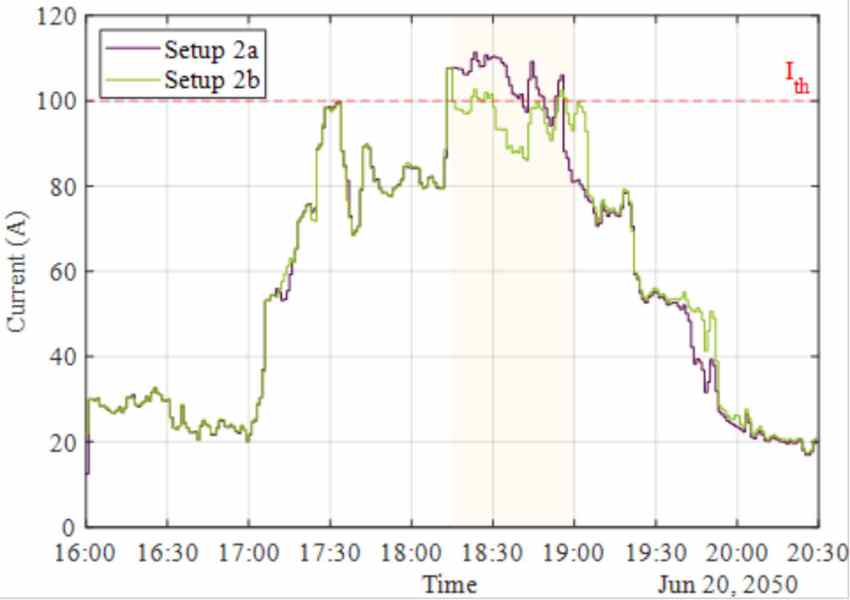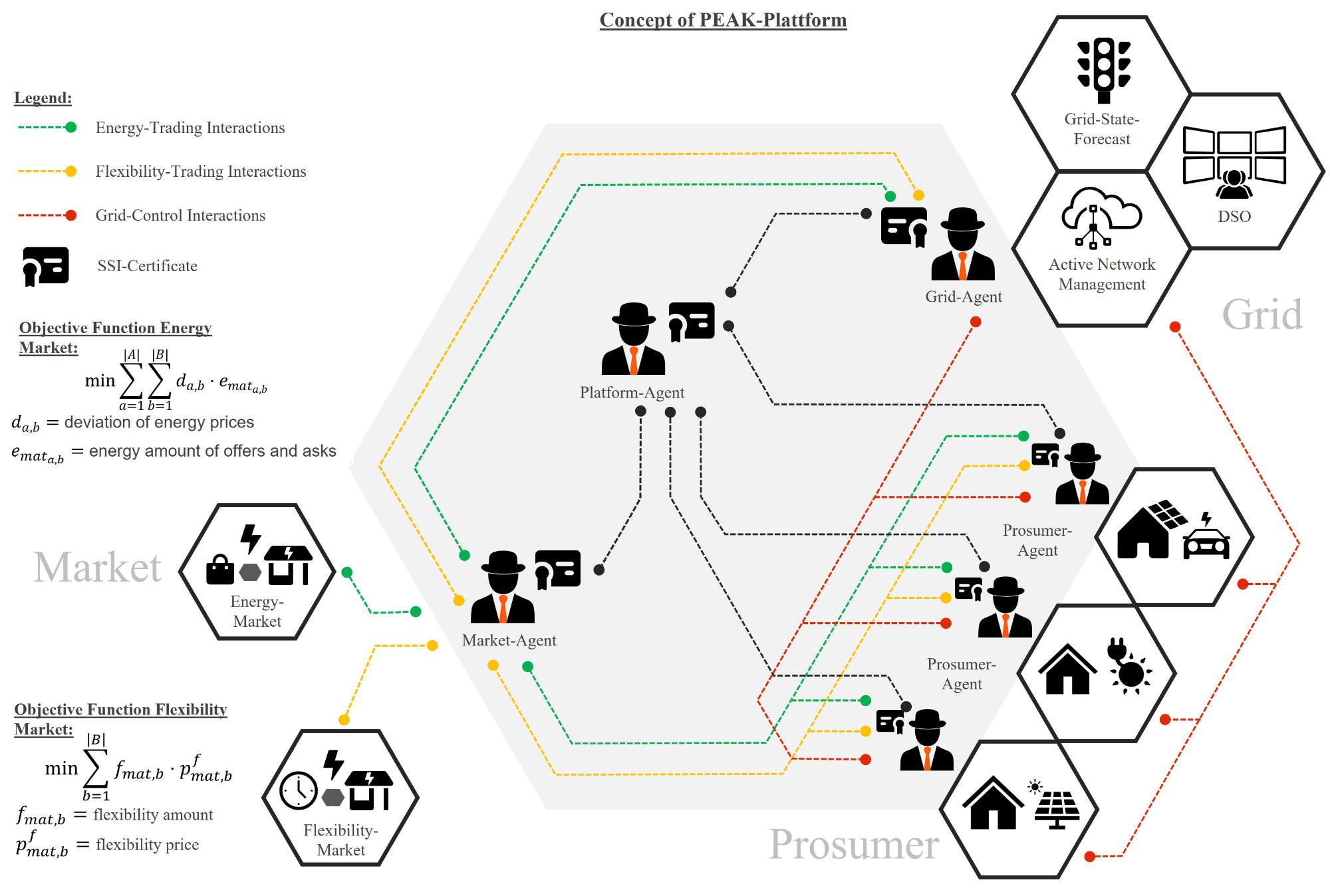The PEAK project aims to create an integrated platform for peer-to-peer energy trading and active grid management. This platform allows prosumers (both producers and consumers of electricity) to trade surplus energy with their neighbors while contributing to grid stability. To facilitate automatic participation in P2P markets, software agents optimize internal household power flow and trade on the market. Secure authentication of market participants is ensured using self-sovereign identity. Key aspects include reliable energy supply, secure transactions, and testing in smart grid environments.
The project runs from March 2021 to May 2024 and is supported by the Federal Ministry for Economic Affairs and Climate Action and Projektträger Jülich GmbH.
Easy Engineering: What are the main areas of activity of the company?
The PEAK project focuses on several key areas of activity. First, it is developing a platform for peer-to-peer (P2P) energy trading and active grid management to facilitate local energy exchanges and enhance grid stability. Second, it is implementing software agents and distributed ledger technology (DLT) to ensure secure and automated transactions. If market-based energy management for future periods is not feasible, for example, due to insufficient energy or flexibility offers, curative grid congestion management is undertaken by the grid management system of a cooperating company.
Finally, it conducts market design, potential analyses, and regulatory framework studies to support the integration of these technologies and optimize market operations.
E.E: What’s the news about new products/services?
Lately we investigated the scalability of the market when integrating three low-voltage grids and one medium voltage grid into the market. Thereby we measured various economic and technical related key performance indicators to quantify its scalability. The results will be published soon.

E.E: What are the ranges of products/services?
Besides the peer-to-peer energy market platform, we developed an open-source toolchain which provides tools to optimize the power flow of prosumers, enable market participation, provides the market optimization algorithm, and offers agent-based power flow calculation.
E.E: What is the state of the market where you are currently active?
The energy market is increasingly shifting towards decentralization, with a significant focus on integrating renewable energy sources. There is a growing need for innovative solutions to manage grid stability and energy trading efficiently. While local energy markets are being piloted and researched, their real-world implementation in Germany currently faces significant regulatory challenges.
E.E: What can you tell us about market trends?
In the context of the blockchain trend over the past few years, a significant amount of current research focuses on integrating blockchain mechanisms into peer-to-peer energy trading. Blockchain technology offers a decentralized, secure, and transparent platform that can facilitate efficient energy transactions between peers. This approach has the potential to enhance trust and reduce the need for intermediaries in energy markets.
Additionally, efforts are underway to standardize interfaces and data models to enable the large-scale integration of local energy markets. Standardization is crucial for ensuring interoperability between different systems and platforms, which is essential for scaling up local energy markets. By creating uniform standards, it becomes easier to integrate various technologies and systems, facilitating smoother communication and data exchange. This, in turn, can accelerate the adoption of decentralized energy solutions and enhance the overall efficiency and reliability of the energy grid.

In addition, a substantial amount of research is being conducted in decentralized energy management. Decentralized energy management systems aim to optimize the generation, distribution, and consumption of energy at a local level and thereby improve scalability and avoid a single-point-of-failure.
Furthermore, as the regulatory landscape evolves, it is expected that some of the current barriers to implementing local energy markets will be addressed. This could pave the way for broader adoption and real-world applications, ultimately contributing to a more sustainable and resilient energy system.
E.E: What are the most innovative products/services marketed?
The PEAK platform itself is highly innovative, combining P2P energy trading with a flexibility market and incorporating self-sovereign identity to ensure secure and decentralized market-based energy management.
E.E: What estimations do you have for 2024?
In 2024, peer-to-peer energy markets are poised for further development, with an increasing number of research projects integrating these markets into low voltage grids. As a result, peer-to-peer markets are transitioning from experimental research projects to commercially viable products. This shift signifies a maturation of the technology, bringing it closer to widespread adoption and practical implementation in the energy sector.

